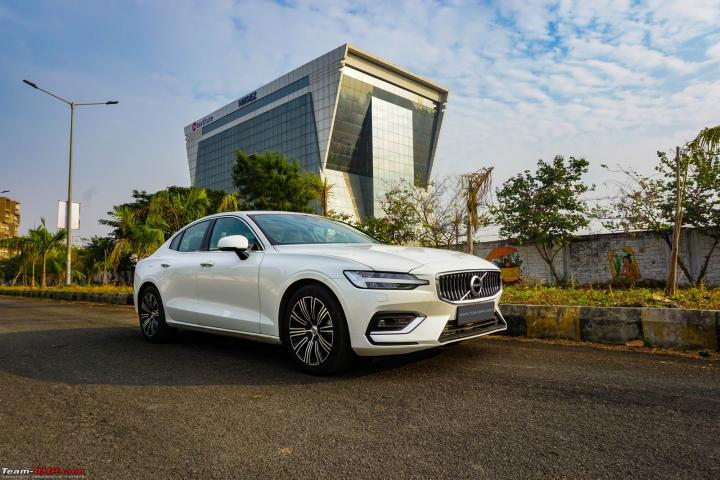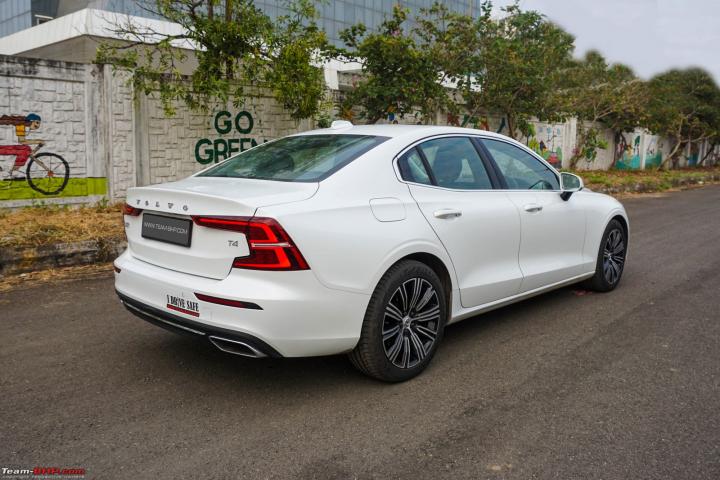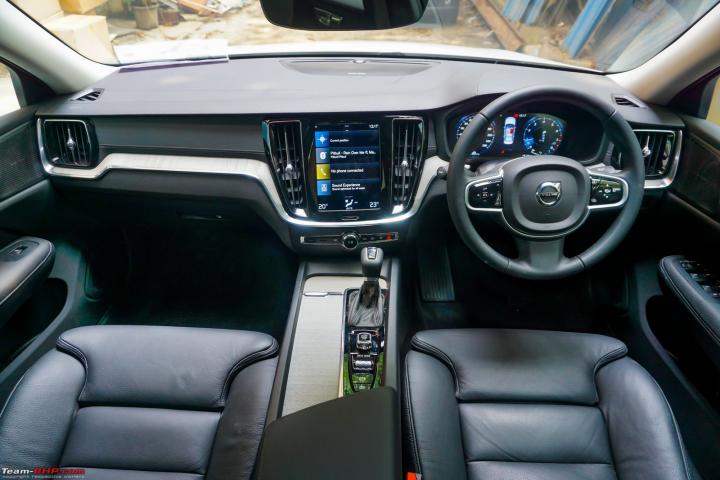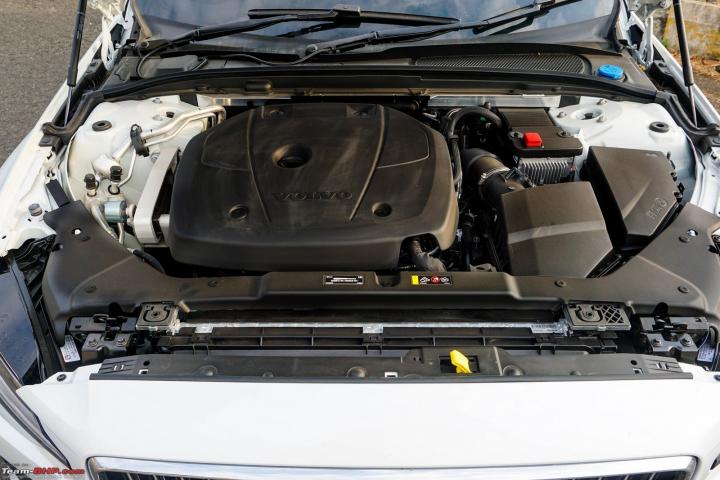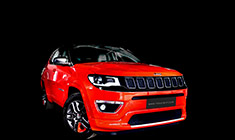News
How I got Reliance Insurance to pay for engine seizures on my Volvo S60
Unfortunately, the insurance game in India is such that people feel lucky when their insurance claim is approved.
BHPian kmalhotra1901 recently shared this with other enthusiasts.
I am a practising Corporate lawyer in Delhi. I own a Volvo S60, D4 Kinetic. I bought my car second-hand in late 2021 with a running of 38,000 km and in well-maintained condition. I simply love the car.
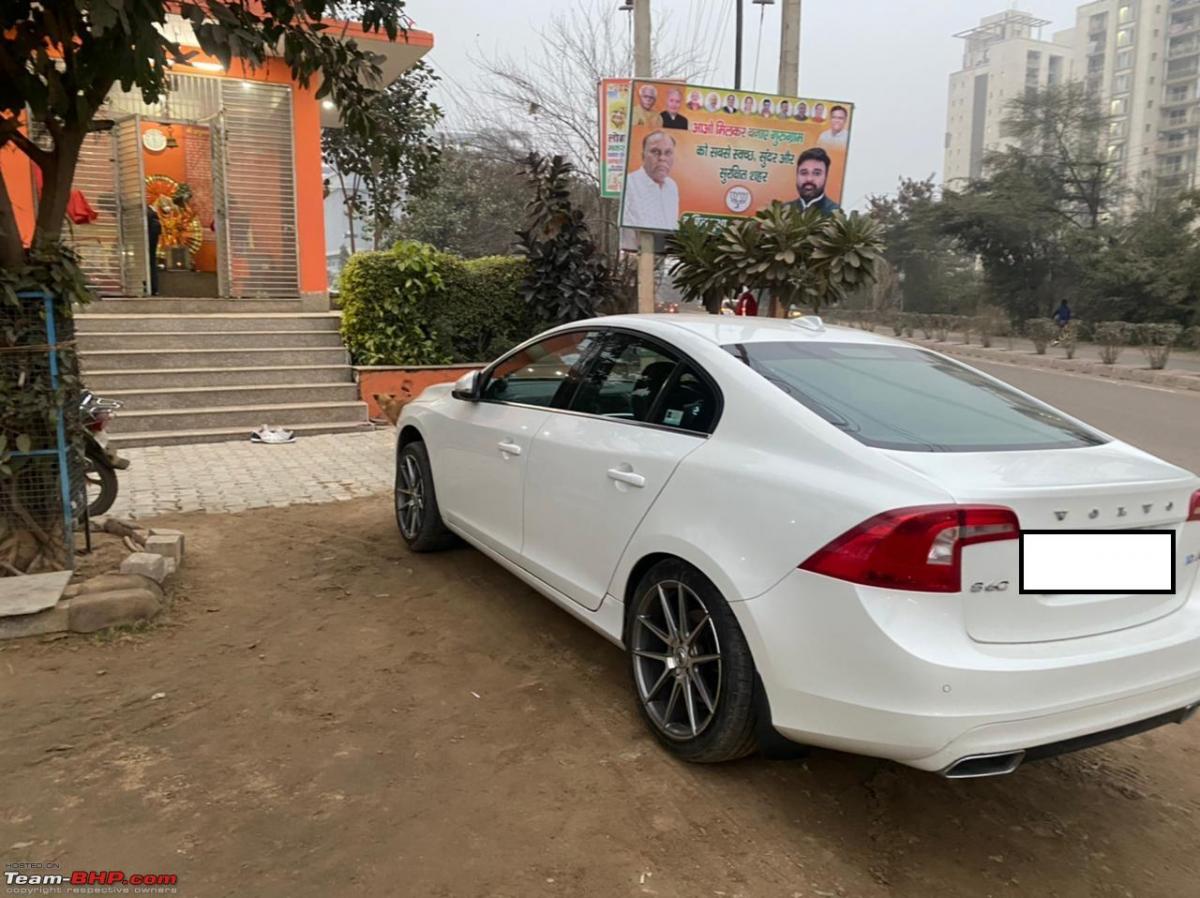
I have been meaning to write this blog for long; like really long. Why you ask? Well, firstly, I am grateful to all fellow BHPians for their informative posts. I followed various posts here on car repairs and insurance-related grievances, and they were helpful in resolving mine. I hope by sharing my experience here, I might be helpful in solving someone else. Especially, the insurance-related issues I faced in my case were unique. My case essentially touched upon aspects of reopening accidental insurance claims with insurers, and insurer liability in case of aggravated loss post an accidental repair. Please bear with me for a long post coming up.
Chapter 1 – The innocuous accident of my S60
My story begins almost a year ago; on 08-July 2022. While on my way to work, my car met with an innocuous accident. If you live in Delhi, you will relate to omnipresent heaps of construction materials waylaid on the side-lines of roads. I went over a similar heap of construction debris.
Nevertheless, when I stopped and inspected, I noticed no major damage to the exteriors but noticed that some iron bars got lodged in the undercarriage of my car. However, unsuspecting of any major damage, I got into the car, and moved it slightly forward, to loosen the debris. The time was running against me as I had to make it to the office, so I chose to drive away without any further inspections.
My horror thereafter started. After driving for another 10-15 minutes, I noticed a “low oil pressure” indication on my car’s dashboard. The indication quickly escalated into a much more urgent “no oil pressure” warning.

The indication asked me to immediately pull over and stop the engine. Now here is something which is important to note in my story. At this moment, I did not know for how long the warning light was flashing. I just saw a “low oil pressure” warning quickly develop into a “no oil pressure” warning within a few seconds. Anyways, since my office was hardly a few hundred metres ahead, I decided to carry on and stop at my office, where I thought I will have more help and resources available.
Chapter 2 – What the hell happened?
The usual process, as with anyone, in such a situation is to look up the error messages on the internet. So did I. Immediately, to my layman's understanding, it was evident that something is amiss. I could understand that the warning indicates that the engine oil level is low. So, I called the authorized service centre of Volvo; Swede Auto, Gurugram. The service centre customer care informed me that the message is critical in nature and that I should leave my car as is where is. They recommended towing the car to the workshop for further inspection.
Since I had some important work to attend to during the day in my office, I did not tow the car right away. I resumed my office; but as it was late evening to get over with work, I came back the next day, which was a non-working Saturday. I called a towing truck to my office location, and while on my way to the office, I got hold of a local mechanic. I took him to my car and asked him to diagnose the problem. At first instance, he saw a pool of engine oil under the carriage, and on-going under the carriage pointed me towards a gaping hole in my undercarriage. By that time, it was clear that I had damaged the undercarriage. Nevertheless, as the towing vehicle was already at my office, with a heavy heart I towed my car to Swede Auto.
Chapter 3 – The first set of repairs
The workshop mechanics mounted my car for inspection. Upon hoisting onto a ramp, my initial fear was backed up with evidence of a major chamber burst.

Thereafter, the authorized service centre raised an insurance claim with the insurer, Reliance General Insurance, the same very day. The diagnosis was followed by a visit from the surveyor. The process of approval was smoother than expected, without any surprises. The repair estimate of around Rs. 1,00,000/- was sent to the insurer, and the claim was approved to initiate the repairs.
On the following day post approval, I called the Volvo technician handling my case, to understand the process of repair. He informed me that the damaged chamber will be replaced with a new one, some hot oil will be filled in the chamber, and the engine will be fired. On the same evening, I got a call from him, saying that the oil sump has been changed, and the engine has started successfully. He also told me that the car was driven for around 5 kilometres or so without any noticeable issues in the engine. However, by that time, I had read a few blogs on Team-BHP about engine seizure problems due to dry oil chamber run. Since my insurance policy had an additional engine protection cover, I suggested the technician test run as much as he could to be certain of no engine damage due to running the car without engine oil.
On the next day itself, I got a call from the technician saying that the car was test run for 30 kilometres with no issues. I was satisfied by their explanation; went over to the workshop and took delivery of the repaired car. The total bill settled was Rs. 97,796/- and I had to pay Rs. 5988/- only in salvage and file charges.
Chapter 4- The curious case of a humming engine
My story took a dramatic turn. On 24-Aug-22, after driving approx. 700 KM from taking delivery after repairs, all of a sudden, I noticed a humming noise emanating from the engine. On consulting the same Volvo technician who handled my case, I was explained that the noise could be due to fresh engine oil in the engine. Nevertheless, he also mentioned that since the car was performing normally, I can bring over the car whenever I am around their workshop. However, after running a few Kilometres only, the humming noise turned into high pitch rattles, which echo in my conscience to this very day. More than the trauma of your beloved car developing a major snag, the heavier part was to call the same towing company and dispatch my car again within a month.

Upon inspection, the Service manager at Swede Auto diagnosed some engine damage. The probable cause was the dry chamber run in the previous accident. The insurance company was immediately informed along with a request for reopening of the insurance claim for repairing the engine damage.
The insurance company was completely dismissive of the request. They did not get back to the request for 10 days or so. On inquiring with them, they started blaming some natural wear and tear as the source of the noise of the engine rattling. However, both the service centre and I spoke to them and insisted that they should at least agree to open the engine to identify the problem. I insisted that diagnosis is better than speculation. After some pursuance of another 5-10 days, they agreed to my request to undertake a diagnosis of the problem, provided that I bore the cost of the diagnosis, to which I complied.
This led to a careful job of dismantling the engine. As the engine cylinders were opened, the technicians diagnosed a failure of the main bearing in cylinder no. 4 as a cause of engine seizure. The reason was concluded to be a failure of the part due to a high level of friction developed due to loss of lubrication in the bearing, leading to a compromise of its integrity and later failure.


The service centre's opinion was shared with the insurance company along with expensive approx. cost of repairs of Rs. 6,50,000/-. As expected, it was followed by total silence from them for more than 30 days. Meanwhile, it was disheartening to see my car lying wide open. Like a patient on a ventilator.
Chapter 5- Insurance Companies and their notorious modus operandi
Till this point, I had neither informed the insurer nor the service centre about my legal background. I chose to be a silent observer between their dealings to figure out the right way out of the problem. I read many stories on Team-BHP and otherwise about the murky insurance business. On one hand, the insurers always try to cut corners by rejecting claims with the slightest suspicion; even big companies are into the modus operandi. The “benefit of any doubt” goes against the “insured”. On the other hand, there are numerous stories about fake insurance claims and insurance rackets.
Meanwhile, I had also made inquiries with many insurance brokers and lawyers in my circle, who had advised me about the slim chances that my insurer will re-open the claim. The technical reason is that once I took the delivery of the car after the first set of repairs, I signed a “discharge of liability” form. The conventional industry view is that the endorsement relieves the insurer of any further liability arising for the same cause of action (accident). Although, some lawyer friends also pointed out a few case laws in India which dispute the practice of discharge of liability. These cases point out that discharge of liability is considered to be waived if the insured can prove that the discharge was given under false representation. Those who want to delve deeper into this topic can refer to the decision of the Supreme Court in the cases of United India Insurance v Ajmer Singh Cotton and General Mills and Others and United India Insurance Co. Ltd. v ASA Singh Cotton Factory and Others [(1999) 6 SCC 400.
Therefore, the question remained whether the insurer will re-open the claim despite getting a discharge of liability and considering that 4 weeks and 700 KM had passed before the aggravated loss got detected from the same incident. The odds were in favour of the rejection of the claim. Therefore, I started preparing for the worse.
But, somehow I knew that the insurer cannot take my claim lightly, as I had timely and accurately informed them, furnished all towing bills establishing my turn of events, and acted bonafide by bearing the cost of engine diagnosis. Importantly, I had the opinion of Volvo’s authorized service centre backing my claim.
Nonetheless, after a few more weeks of patiently waiting and sending some chase-up emails, the insurer finally got back to me. This time I was surprised as they advised me to provide some kind of “third party opinion” from the manufacturer, Volvo Cars India [VCI], ratifying the opinion of their authorized workshop. I asked them about the reason for their request, to which they indicated that I am acting in connivance with the workshop for the insurance claim. This allegation really hurt me.
Despite the burdensome and illogical demands, I decided to meet their demand. There were again a couple of reasons. First, by that time, my patience was running out. I resolved that this would be the last demand I am meeting to amicably resolve the issue from my side. The second reason was by agreeing to meet their demand, I can further my claim of putting an unreasonable burden on the insured if the matter ended up in court.
I escalated the matter to Volvo India. Here I would like to thank the General manager of the authorized service centre, Swede Auto, Gurugram, Mr Vishal Munjal, who was extremely helpful in handling the problem and providing a resolution. Although Volvo India declined to send their technical engineers to evaluate the condition of the car, they wrote to the insurance company stating that Volvo provides a lifetime guarantee against the failure of the damaged part (main bearing), and the extent of damage to the part in question, could only possibly result by some external influence such as loss of lubrication in the engine. This was good backing for my case, and I was heartened to see a manufacturer actually standing by their product. No wonder why Volvo cars frequently create 1 million miles records.
Chapter 6 – Let’s play a bargaining game
Armed with the opinion of Volvo India, the insurer realized that their options are cut out. They agreed to pass my claim, but on the contrary, they chose to negotiate on the repair cost. Reliance termed my claim as substandard, meaning that the insurer believed that there was some pre-existing problem in the car which had resulted in the insurance claim and that I had not acted bonafide. Initially, they offered me to pay only 25 % of the repair cost, which was then raised to 50 %. This was also the time I lost my patience, and I escalated the matter to the insurers' grievance cell. Finally, the insurer offered to pass my claim on a substandard basis with 75 % of the repair cost to be borne by them.
It was almost mid-November 2022, 3 months since the dismantling of the engine. I agreed to their offer to undergo the repairs by paying the remaining 25 % of the costs. By now, my car had been lying with its engine dismantled for more than 60 days, and I thought it was technically prudent to go ahead with repairs than wait any longer in order to avoid issues in other parts of the car.
I approved repairs, and the replacement parts [main bearing, crankshaft etc.] were ordered. The turnaround of parts from Sweden was quick. Finally, the car was repaired, and I took delivery of the car on 24-Jan-23, after 6 months of reporting it for repairs the first time. The car was repaired with a final bill of Rs. 5,25,068/- out of which, I paid Rs. 1,11,598/- out of my pocket.
Chapter 7 – Let me sue you!
Unfortunately, the insurance game in India is such that people feel lucky when their insurance claim is approved. On the contrary, paying up your insurance claim is not charity, it’s a legal obligation of the insurer. That somehow gives an upper hand to the insurers. For example, what put me off in my claim was their take-it-or-leave-it approach.
Nevertheless, at this moment, there were 2 choices. The first one was to approach Insurance Ombudsman. The second one is the consumer court. I found out from my professional circle, that although Ombudsman as a forum usually favoured the insurers, appealing to them was simpler. The most important point in appealing to the Ombudsman is that its decision is non-binding on the insured. This means that if the Ombudsman decides against the insured, he/ she can simply choose to ignore the decision. I actually thought that the Ombudsman adjudication will be a prelude to the proceedings in the consumer court. So, I appealed the insurer's claim at the Insurance Ombudsman, New Delhi without any delay post taking up the delivery.
To my surprise, the procedure for appeal was simpler than expected. Any person, who is aggrieved by the decision of an insurance company, can register a complaint with the Insurance Ombudsman within one year from the cause of action. The only requisite is that the complainant should have first escalated their complaint with the Grievance cell of the insurer.
For filing the complaint, I had to file an online complaint at their online portal, www.cioins.co.in. The portal is user-friendly, the complaint is tied to your mobile number, and all updates are shared with you in real time.

For the complaint that I filed on 08-Feb-23, I was first called for a hearing on 16-Mar-23. Since the insurer did not come to the proceeding to their detriment, I was given a second date on 28-Mar-23, with a final notice given to the insurer.
On the date of the hearing, I went to the Insurance Ombudsman's office on Asif Ali Road in New Delhi. The office was very well managed. The staff guided me to the hearing chambers, where my matter was called. The matter was listed in front of the Ombudsman chairman with a couple of technical members supporting her.
The hearing went smoothly. The chairman asked me to summarize my grievance in summary, and after that, she took over the show. I was a mute spectator thereafter. To my surprise and joy, the Ombudsman was reprimanding the insurance company. I also found that she was well-informed about my case. I think this was because I had drafted the complaint meticulously and filed all evidence (towing bills, repair bills, emails exchanged, and opinion of technicians) in an orderly manner. One additional factor that weighed in my favour was that my policy had an engine protection cover. Within 15 minutes of the hearing, the Ombudsman awarded my claim, asking the insurer to pay up the cost within 30 days.
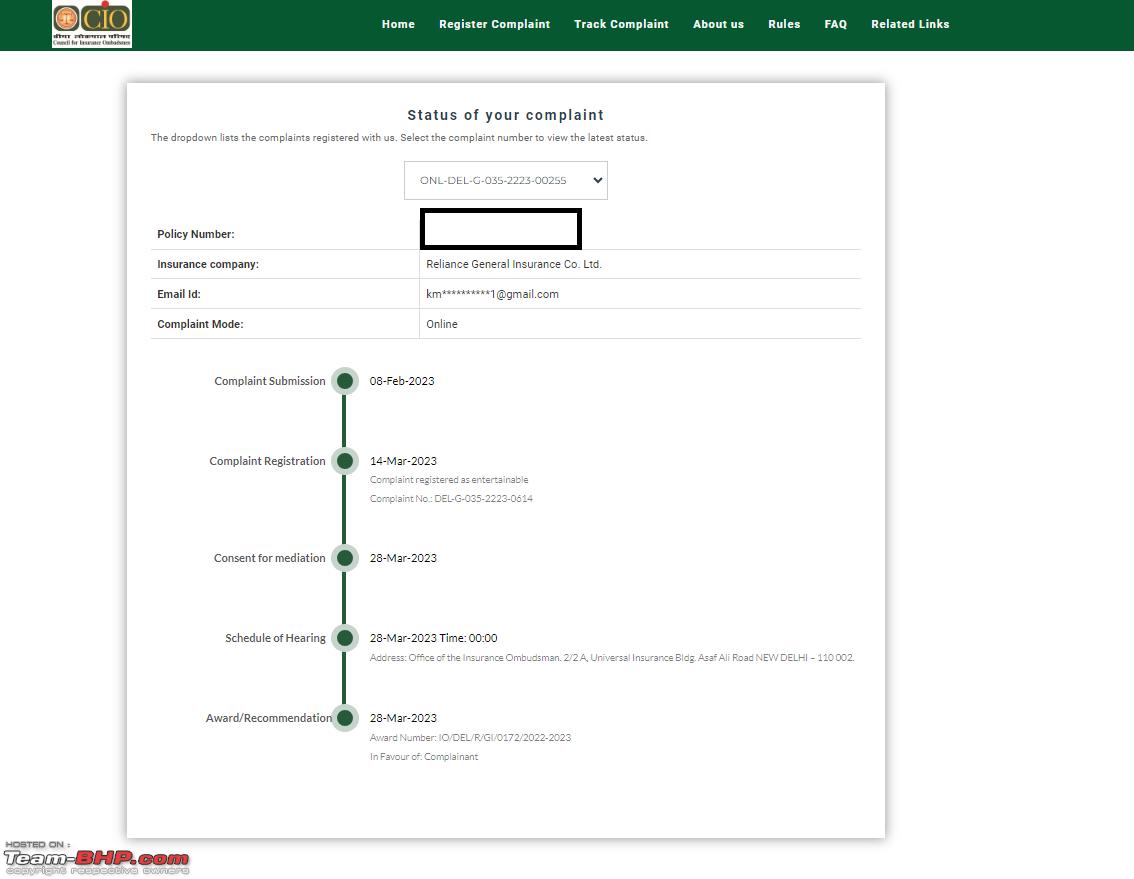
After approaching the insurer with the decision, and following up with a few documents, by the end of the first week of May 2023, I received the out-of-pocket payment for repairs in my bank account. I feel that one downside of appealing to the Ombudsman is that they award claims only to the extent of the loss. Compensation for mental agony, deficiency of service etc, is not part of their award. It should be.
Nevertheless, since the award is non-binding, I still have the option to go to consumer court and claim these damages. However, I chose not to, as the time investment in consumer court proceedings is more than the expected compensation.
Chapter 8 – Learnings?
Well in my professional career, I have had learnings of few legal disputes, but living through one gives you a different perspective. I am trying to list my learnings by wearing both hats; the one of a lawyer and the other one of an insurance claimant.
- Faking up the accidental claim: During the first few days of my problem, I was advised by many to fake up an accident rather than file a claim of re-opening. Even some insurance brokers in my circle advised in favour of earlier rather than later. I will strongly advise others to refrain from the option. There are a few reasons. Firstly, a fake insurance claim is a systemic problem plaguing the insurance industry. More so, it is also a bane for the genuine parties. I found it the hard way when the insurer doubted my integrity by blaming my connivance with the service centre. As a bonafide insurance claimant, an allegation like this hits your conscience. Moreover, the insurance companies are most of the time smart enough to recognize the chaff from the grain.
- Always check up on your vehicle after accidental repairs: As a rule, the liability of insurers usually extinguishes as soon as you take delivery of your vehicle after repairs. That is why be thoroughly sure of the repair. You can work with your workshop to give you extra time to test drive your vehicle. The usual benchmark is that the authorized workshops will give you a 30 KM test drive window. But I found that is negotiable. In case of critical repairs, you can buy more time. I test-drove my vehicle for around 100 KM after the engine repairs. You can keep your foot down and make the test drive non-negotiable in case of critical repairs to your vehicle. Remember reopening insurance claims is very cumbersome.
- Always assume the worse outcome: Insurance claims are taken very lightly by us. The general feeling is that they are passed by default. It is not the case. Cheaper claims might be passed easily, but the expensive ones certainly aren’t. Even a week’s delay in reporting of claim to the insurer might lead to the rejection of the claim. Many of us rely on the workshop or service centre to pursue the claim. That is ok, but please also go through your insurance process simultaneously. It is always advisable to read the insurance policy word for word. Every policy comes up with a summary of the terms right at the beginning; read it if not the entire blueprint.
- Choose your insurance plan wisely: My advice for everyone is to go with a zero depreciation policy. Also, opt for engine protection which covers engine failure due to hydrostatic lock (water ingestion) and oil leak. Especially, for premium/ luxury cars. The general word is that the engines of modern-day cars don’t fail just like that, but the reality in India is a little different. Our road conditions are harsher and waterlogging on roads is a common sight. Yes, the engines of the cars don’t fail just like that, but when they do the cost of repairs could be exhaustive. Engine protection covers give the trade-off to paying an extra premium to be recovered in any such eventuality.
- Don’t fear taking the legal course of action: I feel that the general sense prevailing in courts favours the insured rather than the insurance company. The courts most of the time align with the insured. For insurance disputes, do think about complaining to Ombudsman as the right way. The process is easy, and not agonizingly hard. And you always have the option to appeal to consumer forums if you fail to convince the Ombudsman.
I hope the post was useful. Apologies for the wordiness thereof. Thank you for reading, please feel free to leave comments below.
Check out BHPian comments for more insights and information.
- Tags:
- Indian
- S60
- Engine Issues
- car insurance
News
Volvo S60 delisted from India website; discontinued?
The rise of SUVs has put a dent in the S60’s sales globally, which may have forced Volvo to re-evaluate its product line-up.
The Volvo S60 is no longer listed on the brand’s India website. It has also been removed from the MY23 price list, which suggests that the model may have been discontinued.
The latest move by Volvo could be part of a global model reshuffle, as the S60 also appears to have been phased out from the UK market. However, the carmaker did state that the decision was temporary.
A Volvo spokesperson said, "we're continually re-evaluating our product portfolio and as part of this process have temporarily removed the S60 from sale in the UK."
The latest iteration of the Volvo S60 was introduced in India back in January 2021. The car was available in the top-spec T4 Inscription trim powered by a 2.0-litre petrol engine.
The rise of SUVs has put a dent in the S60’s sales globally, which may have forced Volvo to re-evaluate its product line-up. According to Jato Dynamics data, sales of the S60 and V60 have tanked 51% this year compared to 2021.
Thanks to BHPian pqr for sharing this information with other enthusiasts!
- Tags:
- Indian
- S60
- Discontinued
- Volvo S60
News
Confused between the BMW 330i, Volvo S60 & Mercedes GLA 220d
Some of my requirements include a good automatic transmission, comfortable ride quality, cabin space and as many safety features as possible.
BHPian sgautam31 recently shared this with other enthusiasts.
Let me quickly introduce myself. I am based in Hyderabad, originally from Himachal, avid road traveler and enjoy long drives, have covered half of the country and the most recent trip was a 7000 km long round trip.
Now, I am in search of my new car and need some help from the community to make the right decision.
Brief history with cars
My first car was a Volkswagen Polo TDI which I owned from Nov 2014 to Nov 2016. This was a manual. After moving to Bangalore from Hyderabad, I realized that I desperately need an auto transmission and bought Honda City VX CVT in Nov 2016 and I am very happy with the driving experience. I have driven across the country with family (wife & small dog).
My requirements
- A good reliable automatic gearbox with an overall good performance with no lag.
- Should be loaded with safety features.
- Apt for cruising on highways to cover 700+ km/day at times (Adaptive cruise control is good to have, but not the only deciding factor).
- Spacious and comfortable ride quality.
- Good suspension as at times we travel to the unfamiliar territory (potholes, broken roads, dirt roads) being a wildlife enthusiast, this will be around 2-3% of overall road travel.
- Should handle ghat roads (hill roads) well, as we are originally from Himachal and keep on traveling home from Hyderabad.
Vehicles under consideration
BMW 330i
Took a test drive of 330 Ld and really enjoyed the drive, with the focus on the driver, had an overall good experience with ride quality as well. Unfortunately, they did not have 330i available for the test drive and the test drive was in a long-wheel diesel variant, but the salesperson mentioned that ride quality and comfort won’t be much different, however, 330i will be high performing vehicle. My only apprehension was that the boot space is very shallow and it missed out on some features at this price range (like - Keyless entry, Adaptive cruise control, Auto Braking, etc.)
Volvo S60
I have looked at the car and am taking the test drive tomorrow, but the looks and features are mindboggling, really liked the build quality and the tech features, especially the safety features and adaptive cruise control. Super excited about the test drive to compare it with the BMW. My apprehension for Volvo is its brand appeal and post-sales support as the dealership is very thin in comparison to German brands. Also, not too sure how will this car handle rough roads and unfamiliar territories.
GLA 220d
Initially, when I started my search I was trying to limit myself only to SUVs or Crossovers but decided to expand my search to sedans since there are limited options available considering Q3 is yet to be launched and X1 did not leave us with a great impression.
I really liked the test drive, the engine was responsive and the cabin is very comfortable and gives a rich feeling. Also, like some tech features, though it misses out on adaptive cruise control. But overall left me with a good impression. My apprehensions with Mercedes is that after reading a lot of discussions I understood that maintenance could be high and the parts are very expensive in comparison to competitors.
I would appreciate the suggestions and any other vehicle that I can consider apart from the ones I have shortlisted.
Thanks in advance for any suggestions.
Here's what GTO had to say about the matter:
The S60 is a very, very impressive car. You should read our Official Review - the Volvo really left an impression on me. It is easily a match to the 3-Series, and much superior to the A4 & ageing C-Class in my opinion.
Drop the GLA. It isn't even close to the S60 or 330i.
Go for the BMW if you want strong reliability, a proven package & absolute driving pleasure (RWD, sweet turbo-petrol, the best AT gearbox). On the other hand, if you are open to trying a different flavour, pick the S60. My only two apprehensions would be on the Volvo's long-term reliability and after-sales support. Have heard good as well as bad stories; it really varies from dealer to dealer and city to city, unlike BMW & Mercedes which offer a more consistent ownership experience.
You should search within the forum and see what Hyderabad Volvo owners are saying about the dealer support.
Here's what BHPian androdev had to say about the matter:
If you like Volvo test drives, it will be worth considering. XC40 can also be considered. I would rate Volvo cars above the CKD Germans when it comes to interior cabin feel (materials, NVH, etc.) They also look great from the outside - probably the best LED light designs. The only downside is that they are not exciting when it comes to driving. Support/service is also limited but should not be a problem in Hyderabad which sells a lot of Volvo cars (never understood why).
Mercedes and BMW will cost about the same to own if you can get a warranty and zero depreciation insurance. Even otherwise also I don't think one should avoid Mercedes due to ownership costs compared to BMW. The real-world difference would be within 5-10% max which doesn't make a case for dropping a Mercedes car that you may have otherwise liked.
I am surprised you liked Honda City after owning Polo - this is where I am confused about what might be your preferences. If you enjoyed Honda City, you should certainly look at Camry Hybrid. Test drive it even if it's just for window shopping.
BMW is the be-all-end-all choice for anyone who loves a spirited drive at these price points.
Sedan vs SUV is a personal decision. Personally, I believe one need not get an SUV just for those 1-2% situations with bad patches of roads. Too much needless premium to pay for an SUV and it's inferior 90%+ of the time. Just my opinion.
Here's what BHPian akash_v12 had to say about the matter:
A quick check on the Volvo website shows that their network isn't as sparse as it was a couple of years ago. A lot of dealers/service centres have come up throughout the country and it shouldn't be much of a bother anymore.
Since the previous cars you've owned have served you well throughout your road trips, I don't think GC should be a big deciding factor. Sedans are the way to go forward for long road trips - nothing matches the driving dynamics and comfort of them. As Androdev mentioned, there is absolutely no justification to spend the additional money for an SUV for those rare situations (especially in your case where a City has taken everything that you've thrown at it).
The S60 is a great car. Rather spacious and one that can spoil you with the goodies. However, like most other Volvos it's not the most exciting to drive. It's set-up slightly softer than the Bimmers but not as much as the Mercedes. In terms of rear legroom, for anyone more than 5'7" the underthing support will be lacking and you might be sat in a knees-up position, which makes it slightly uncomfortable. The 3 Series also makes sense in your case, but do note that the legroom in the back isn't a lot in SWB Form. If you're looking at LWB, then you should be good on that front. The 330i is a hoot to drive though and is probably one of the most dynamically sorted cars in the segment.
Two more options I'd like to add in are the Audi A4 & the Skoda Superb. The former may not be the best on any front, but it's surely a combination of both. Much better to drive than the S60 (in my brother's opinion) and a tad bit comfier than it too. Also, IIRC there were mouthwatering discounts on the A4. The Superb is something you cannot ignore at this price point. It may be down on the feature list to the Germans but if you're not badge-conscious, it might as well be one of the best options to go for.
Check out BHPian comments for more insights and information.
News
Volvo S60 stock 18-inch tyres: A problem on Indian roads
A switch to 16" or 17" wheels would increase the sidewall height and offer more cushioning.
BHPian kratant recently shared this with other enthusiasts.
Hi all,
I am using a Volvo s60 2015 D4 with 235/40 R18's as standard from the factory. (continental), I replaced them with 4 Pirelli's a couple of years ago, slowly with every trip on the highway each tyre started giving up and I had to replace them one by one (a mix of Apollo/Dunlop/Pirelli due to availability issues). I am quite fed up with taking the car on the highway and having a stress free drive with the tyres on the back of my mind, the entire route to and fro.
I want to shift them to 16" ideally so I can increase my sidewall, But I'm not sure if the brakes are 16" or 17" in an 18" tyre. Please advise the best possible route to take so I can change all the alloys and tyres and finally be stress-free while driving on the highway/city.
Grateful for any and all advice! A thousand thanks to you all.
Update: I am not one to mess with the OE fittings of any car that we have purchased and since day one the tire has been 235/40 R18's. I have seen 16" on the same S60's but I have seen a lot of them with the same tyre size as mine. I would remember if I had got anything replaced
I am facing the issue with Pirelli, and now with Dunlop, Pirelli only had bulges/cracks, Dunlop outright blew out.
OE Continental tyres lasted 4 years, didn't face any issue since I had barely taken it on the highway and the car was sparingly used as well, to be honest, and since lack of use, the OE continentals developed minor cracks all around in all the tyres.
The failure mode is bulges/cracks and this time a slow blowout. The car mostly goes from Gurgaon to Lucknow which in my opinion is one of the smoothest highways in India, but at the same time, there are violent potholes in Delhi or on other highways.
I basically thought to come down to 16" or 17" so that the sidewall size can increase and there more of a cushion, but since there is no option in 16" for 235mm, that option is lost, and also I think my brakes could be 17" so 16" is totally out. But I'm not sure on the size of the brakes. A gentleman on another thread has suggested me to go on 17" and use 225/50 R17's, and it seems tempting. How much do you think this downgrade would affect the handling/mileage/turning radius/acceleration etc?
Here's what GTO had to say on the matter:
Fully agree with your intended move to 16s. It will give you far more robust tyres, cheaper tyre replacement costs and as a bonus, much cushier ride quality. Considering the S60 was sold with 16s internationally, it should be an easy fit and worth the effort. Just reconfirm with your Volvo dealer once that there is enough clearance for the brakes, and ensure no more than a 2% difference in the overall diameter.
Manufacturers are really brain-dead to be choosing such big rims + short tyre sidewalls for India. I have repaired my 530d's rims like 10 times for bends in 6 years of ownership. Luckily, I haven't faced any ruptured tyres yet.
I recently took an S-Class riding on ridiculous 20" rims to Lonavla! Ended up coming home with the space saver. Front tyre totally damaged on a rough road (not even a pothole):
Here's what BHPian psispace had to say on the matter:
I can personally vouch for this tyre size. Had been using this in the past until I upgraded to 225/55 R17. Did this only to get a little more ground clearance.
Quite surprising that your car came with OE fitted with 235/40.
Unless you drive like a hooligan, you won't find any downgrade in performance with 225/50. You will also find to have better ride quality with the additional profile. I personally prefer Michelins. However, in the present market scenario, you might find it difficult to procure these.
All the best!
Here's what BHPian niranjanrvce had to say on the matter:
Hi, I have a Volvo S60 D5 that came with 235/40/R18 as well and those tyres were an absolute pain on the highways and even slightly imperfect roads. Went through a few CPCs since the sidewall was so easily damaged.
Then I changed to 245/45/R18s and I couldn't have been happier. The difference is literally day and night even though it is only 16mm of the additional sidewall. The car handles bad roads like any other typical sedan and I have even had quite a few bad pothole hits at highway speeds without any issues.
I would highly recommend changing to this tyre profile before you go the costlier route of changing rim sizes and et all. I am running Dunlop Sportmax 050+ with this profile and am happy with the tyres too.
Here's what BHPian akshay4587 had to say on the matter:
I can totally feel your pain.
My Alfa Romeo in Australia rides on 235/40/19 tyres, and even though the roads there are brilliant, yet I have to be careful with the tyres and rims on many roads.
I recently picked up a preowned 320D Msport, and it came with 225/45/17 tyres, even though they are +5 on your tyre's profile, they feel very delicate.
Just completed a 600km trip this weekend, and I had to keep my eyes wide open even for the tiniest of the potholes.
My Car came with a lot of extras including these big brakes, which means downsizing isn't an option for me, since I do not want to give up on these brakes. I may switch to 225/50/17 at the next change.
Check out BHPian comments for more insights and information.
News
10 years & 82,000 km with my Volvo S60
She still looks fresh even after all these years and seems good to go for another 10.
BHPian psispace recently shared this with other enthusiasts.
10 years, 82000km Update
And so a decade has passed since I got my hands on this baby. How time flies! Feels like only yesterday that I had started typing the first lines of this thread. I personally never imagined I would be able to retain her for so long. The itch to by a new car was always there. The pandemic forced me to hold onto my resources a bit longer as the future still seemed a bit unpredictable. And I did not want the burden of a loan during this time. The reliability of this car meant that it did not warrant a new purchase either. Then there is the resale value proposition. Well, this has aged beyond where that becomes an issue. A new Creta is more expensive than what she is worth right now. But what she holds in reliability is invaluable. I’ve always felt a little sorrow when letting go of my old cars. If I had the space and the resources (i.e. the moolah), I wouldn’t have sold any of them. It would indeed be a very heavy heart when I part with this one.
Since her last service in May last year, she only required replacement of the left rear shock absorber (Rs. 16,000) and front ABS sensors (Rs.11,000).
Things were going smooth until November last year when we had a minor accident. I got rear ended by a container truck at low speed. The truck was parked on the opposite side of the road to take a sweeping turn into a narrow road on my side. I thought the truck was parked there and was passing him. The driver of the truck thought that traffic was clear and he started turning just as I was in his blind spot. He ended up nudging my right rear fender.

That fender is a single piece that goes all the way to the A pillar. That and the rear bumper had to be replaced. Removing the rear fender, supposedly disturbs the integrity of the beading holding the rear wind screen, and the demist wires running into it. Hence it was recommended that even that be replaced. My insurance company (Oriental Insurance) was okay with that. Glass parts were fully covered in my policy.
The rear window costs Rs 45,000; the rear fender Rs 65,000; and the bumper Rs 69,000.
Unrelated to this incident, the roof lining had started peeling off slowly since a few months until it reached the stage in the picture below.

Replacing this would involve removing the front wind screen. So I had put it off to another service. As advised by my trusty service engineer, this was held together with pins temporarily which would not be visible outside. As luck (or the lack of it) would have it, I used this opportunity to replace the lining. The original lining would cost more than a lakh. I was allowed to outsource mine for 20,000 from a local upholstery dealer (Binu’s car boutique, Kollenchery). The quality was good. If you haven’t seen the original, you wouldn’t know the difference.
You know your time isn’t good when your car's alternator belt gives up on you, on your way back from the police station, which you visited, to collect, the GD entry for the accident you were involved in 2 days back.
I was barely able to reach back to my apartment on limp mode. To add insult to injury, she now had to be flat-bedded to the service center.
All this with labour came to around Rs 2,85,000. I was reimbursed Rs 2,00,000 by my insurance company. Because of the low IDV, my NCB didn’t take a bad hit. My insurance was renewed this year for Rs 22,000 (It was Rs 17,000 last year, after NCB of Rs 6600).
There were no issues with the work done and she came back with a good paint job after three weeks. That’s right, it took three weeks as the fender part was not available in India. This seems to be the expected timeline for imported cars in India. Couple that with the occasional Covid related lock-downs, the part took its time coming. I didn’t have the heart to drive it around in this condition till then. So I left it at the service centre till the work was done. I did receive regular updates via calls as to when the part would arrive during this period.
I had the opportunity of using my dad’s Camry till then. This was a 2014 model but with low running, it was as good as new. I was reminded again of how smooth and silent modern petrol engines are. The quiet, unhurried way in which it wafted across roads was a sharp contrast to the gruff urgency of my diesel Volvo. My next car has to be a petrol or a petrol hybrid.
She was due for her 10th year service in March this year. However the local lock downs in force in Kerala at the time, meant I had to stare at the ‘Service due’ message on the MID in the morning every day for two months. This month she got fed up and started showing me ‘Service Over Due!’. So I told her alright, alright, and finally got an appointment for her service. Part of the reason for delay was parts availability and my need for same day delivery. As usual, when the time came, the car was picked up in the morning and returned in the evening.
Apart from routine service, the timing belt needed to be changed. It was recommended to be changed at 100,000km, but since it was already 10 years, I was advised early change.
Routine service with oil change, filters etc., came to 28,000. Wiper blades were changed for 5000. With the timing belt, belt tensioner and associated parts and labour, the gross total of this service was 83000.
The seatbelt pre-tensioners were changed as part of a global recall. Also my model year is part of a global recall for change of door locks. As they didn’t have stock, this was postponed for a future service. My rear disc pads would need replacement in 5000km. Also the right front suspension strut and bush are at significant wear.
Thus was an eventful 10th year. As she grows older, I do expect more parts replacements to pop up on the way. But my service engineer has assured me, that at present, nothing major is expected to be replaced.
Summing up cost of ownership till now:
Although the years mentioned below are correct, the costs are not in exact chronological order.
These do not include fuel expenses, washing services, 3M coating, non OEM accessories etc.
Some of the costs have been clubbed together and the important ones have been shown separately. To the uninitiated, it may appear shocking at first sight, but these costs are spaced out over many months in most instances.
This is just to give to a potential buyer an insight into the cost of ownership of vehicles in this class, over and above the EMI that he or she may pay.
1st year:
- Routine service: Free as per introductory offer
- Rear wheel arch dent repair: Rs. 16,000
- Insurance: Rs.65,000 (ICICI)
2nd year:
- Routine service with wiper change, rear brake pad replace: Free as per introductory offer
- Insurance: Rs.58,000 (ICICI)
3rd year:
- Routine service: Rs. 16,000
- Rear brake pad: Rs. 8,000
- Battery replace (Exide) – Rs. 14,000
- Tyres replace (Michelin) – Rs. 45,000
- Headlamp windscreen washer replace: Rs. 6,500
- AC switch and modulator replace: Rs. 26,000
- Tow hook cover: Rs.5,000
- Insurance: Rs.52,000 (ICICI)
4th year:
- Routine service: Rs. 16,000
- Front park assist and rear camera: Rs. 1,45,000
- Polestar Engine optimization: Rs.65,000
- Space saver spare wheel with cover: Rs.29,500
- Insurance: Rs. 19,000 (ICICI)
5th year:
- Routine service with brake pad replace: Rs.25,000
- Insurance: Rs.21,000 (Oriental)
6th year:
- Routine service with Battery (AC Delco), turbo hose, strut, antiroll bar link replace: Rs.58,000
- Rear brake discs, pads: Rs. 30,000
- Left ORVM cover: Rs. 14,000
- Alternator belt – Rs.4,500
- Tyre change (Michelin) – Rs.50,000
- Insurance: Rs.22,000 (Oriental)
7th year:
- Routine service with front bumper painting: Rs. 39,000
- Insurance: Rs.20,000 (Oriental)
8th year:
- Routine service: Rs.26,000
- Rear shock absorber: Rs.14,000
- Rear center console panel: Rs. 4,500
- Front brake disc, pad replace: Rs. 36,000
- Metal engine protection plate: Rs. 36,000
- Tyre change (Michelins) – Rs. 50,000
- Battery (Amaron): Rs.10,000
- Insurance: Rs.19,500 (Oriental)
9th year:
- Regular Service: Rs.22,000
- Rear suspension: Rs.16,000
- Front ABS sensors: Rs.11,000
- Accident and incidental repairs: Rs.85,000 (2,00,000 covered by insurance)
- Insurance: Rs. 17,000 (Oriental)
10th year:
- Regular service: Rs.28,000
- Parts replacement including timing belt: Rs.55,000
- Rear Brake pads, front suspension strut, bush (pending) : (?) Rs. 25,000
- Insurance: Rs.22,000 (Oriental)
This comes to roughly Rs. 1,30,000 per year on average. As you can see, the cost increases as the car ages and plateaus at a point. I have also factored in Insurance as it is a recurring and unavoidable expense. ICICI Lombard significantly lowered my IDV in the 5th year. Hence I switched to Oriental Insurance. My car has relatively low miles on it for a 10 year old car, so these costs are subjective. Also, the drivetrain, transmission and parts have changed in some of the newer models of this car. Older parts are more expensive.
Its’ raining cats and dogs here in Kerala and I struggle to keep my cars clean. I just managed to click a few shots of her when she is reasonably presentable.
After a natural rainwater service.

Interiors have aged well. I made the right choice with this upholstery. But Nappa leather will be expensive to replace if ever the need arises.


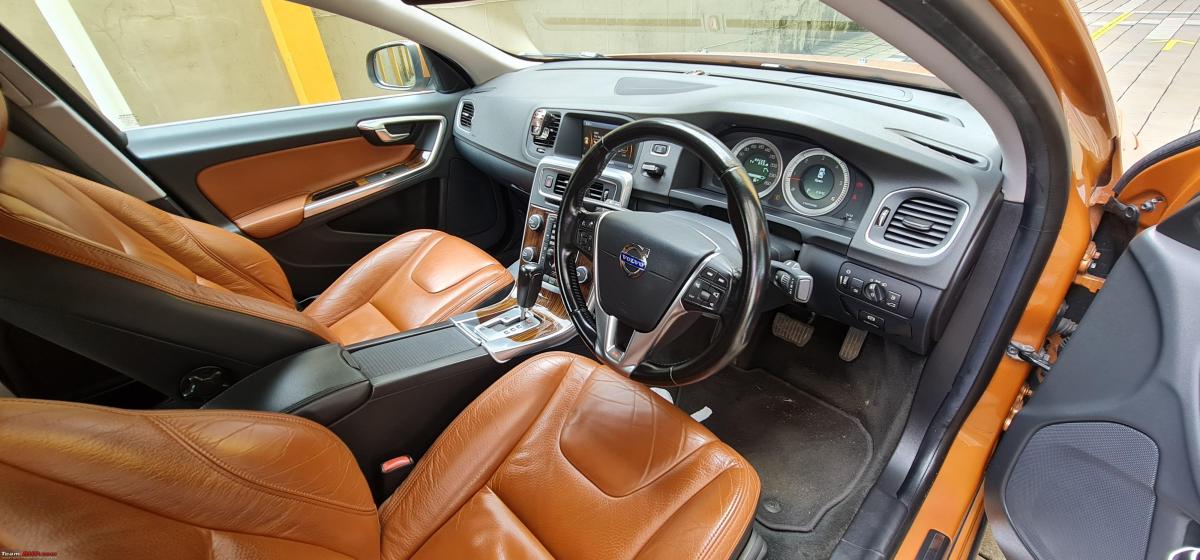
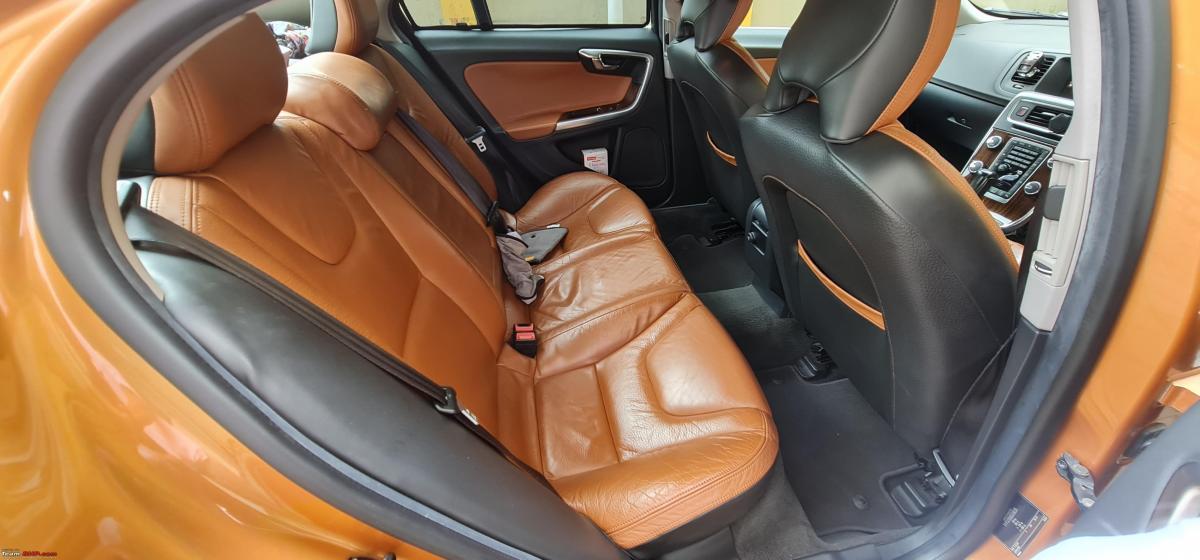
Reflecting back, my ‘Copper Brown’ baby has stuck with me through the years without throwing any big tantrums. She has proved her worth for every rupee I spent on her 10 years ago. She still looks fresh even after all these years and seems good to go for another 10. I still look back at her from a distance on some days wondering why I would ever part with her. Considering the present situation, it seems she’ll be with me a bit longer. And it appears she’s only too happy to tag along with an eager smile.

Check out BHPian comments for more insights and information.
- Tags:
- Indian
- S60
- Car ownership
- Review
News
Volvo hikes prices of S90, XC40, XC60 and XC90
The increase in prices is a result of rising production costs and the weakening of the Rupee. Volvo has stated that it may hike prices again later this year based on production costs.
Volvo has announced a price hike for some of its models in India. These include the S90, XC40, XC60 and XC90.
The increase in prices is a result of rising production costs and the weakening of the Rupee. Volvo has stated that it may hike prices again later this year based on production costs.
The S90 D4 Inscription is now priced at Rs. 60.90 lakh, which is Rs. 2 lakh more than before. The XC40 T4 R-Design is priced at Rs. 41.25 lakh, reflecting a hike of Rs. 1.35 lakh. Prices of the XC60 D5 Inscription and the XC90 D5 Inscription have been hike by Rs. 1 lakh. They are now priced at Rs. 60.90 lakh and Rs. 88.90 lakh respectively.
The S60 T4 Inscription, which was launched earlier this year, does not get a price hike. It continues to be priced at Rs. 45.90 lakh. The XC90 T8 Excellence does not receive a price hike either and is priced at Rs. 1.31 crore.
Volvo had last hiked prices of its cars in 2018.
Source: Car and Bike
News
Volvo XC40 & S60 to be assembled in India
Models like the XC60, XC90 and S90 are also assembled in India.
Volvo plans to start local assembly of the XC40 crossover and the S60 sedan.
The XC40 and S60 will be built at Volvo's Hoskote plant near Bangalore. Models like the XC60, XC90 and S90 are also assembled at this facility and soon all Volvo cars sold in India will be assembled locally.
Charles Frump, MD, Volvo Car India has stated that the company plans to introduce petrol variants of its cars. He added that those purchasing luxury vehicles were not concerned about the price rise, but were eager to utilise less polluting vehicles.
The third generation S60 was launched in India earlier this year. In line with the company's strategy, the car is only offered with a 2.0-litre petrol engine.
Meanwhile, Volvo is also gearing up to introduce its first all-electric model in India. The XC40 Recharge could be launched later this year. It uses two 150 kW electric motors mounted on the front and rear axles, offering a combined output is 402 BHP and 659 Nm. The electric motors are powered by a 78 kWh battery that is claimed to offer a maximum range of more than 400 km (WLTP cycle).
- Tags:
- Indian
- XC40
- S60
- Local CKD Assembly
News
Volvo S60 vs the competition
The car goes head-to-head against the likes of Mercedes C-Class, BMW 3-Series, Audi A4 and the Jaguar XE.
Just a couple of days ago, Volvo announced the commencement of online bookings for the 3rd generation S60 sedan. The car goes head-to-head against the likes of Mercedes C-Class, BMW 3-Series, Audi A4 and the Jaguar XE. One can also consider the Skoda Octavia VRS 245, the Skoda Superb and the Toyota Camry as a competition for the Swedish sedan.
Volvo S60 highlights
• Astonishingly handsome styling! The Volvo S60 looks absolutely fabulous
• Smooth & peppy 2.0L turbo-petrol engine (187 BHP / 300 Nm) mated to a competent 8-speed AT
• Sorted ride & handling. The S60's high speed stability is excellent too
• Euro NCAP's 5-star safety rating & loads of tech like adaptive cruise control, pilot assist, lane-keeping aid, collision mitigation support (front) etc.
• Depth of engineering that is as good as the best from Germany
• Volvo S60: Rs. 45.90 lakh
BMW 3 Series highlights
• Just the right size for a luxury sedan for India
• Great combination of ride and handling; just how a 3-Series should be
• 2.0-litre turbo-petrol and diesel engines developing 255 BHP and 188 BHP respectively.
• Loaded with tech, new style speedometer & more. iDrive 7 is nice to use
• 330i: Rs. 42.60 lakh
• 320d: Rs. 47.90 lakh
Mercedes C-Class highlights
• Stylish design (baby S looks) that you can stare at & admire all day
• Solid build quality & 5-star safety rating
• Features like wireless charging, Midline sound system, a 12.3-inch digital instrument cluster.
• 2.0-litre turbo-petrol and diesel engines developing 148 BHP and 192 BHP respectively. The C300d develops 241 BHP.
• C200: Rs. 41.31 lakh
• C220d: Rs. 43.38 lakh
• C300d: Rs. 54.25 lakh
Audi A4 highlights
• Features like voice command function, Audi Virtual Cockpit, 3-zone automatic climate control, wireless charging
• A 10.1-inch touchscreen infotainment on the higher variant and an 8.8-inch unit on the lower trim.
• Gets mild-hybrid tech and has a regenerative braking function.
• 2.0-litre turbo-petrol engine developing 187 BHP and 320 Nm.
• Premium Plus: Rs. 42.34 lakh
• Technology: Rs. 46.67 lakh
Jaguar XE highlights
• Sporty styling & sharp looks.
• Excellent suspension setup. Easily the best in the segment.
• Updated driver cockpit area.
• Loads of new tech.
• 2.0-litre turbo petrol develops 247 BHP and 365 Nm.
• Jaguar XE: Rs. 46.63 lakh
News
3rd-gen Volvo S60 priced at Rs. 45.90 lakh; bookings open
The S60 is powered by a 2.0L petrol engine that produces 187 BHP and 300 Nm. It does not get a diesel engine option.
Volvo has started accepting advance online bookings for the third generation S60. The introductory price of the sedan is Rs. 45.90 lakh (ex-showroom). This price is valid on online bookings for a limited period only.
The third-generation S60 is based on the Scalable Product Architecture (SPA) platform. The car measures 4,761 mm in length, 2040 mm in width, 1,431 mm in height and its wheelbase is 2,872 mm. It features Thor's hammer LED daytime running lights at the front and has a reworked rear end with C-shaped LED tail lights. The car rides on 18-inch diamond-cut alloy wheels.
On the inside, the car gets a vertically mounted touchscreen infotainment head-unit just like the second-generation model. It comes equipped with features such as 4-zone automatic climate control, Harman Kardon audio system, wireless charging and panoramic sunroof.
Some of the safety features offered in the S60 include adaptive cruise control, pilot assist, oncoming mitigation by braking, city safety with steering support, Run-off Road Mitigation, lane keeping aid, driver alert control and brakes with hill start assist.
The S60 is powered by a 2.0-litre, 4-cylinder petrol engine that produces 187 BHP and 300 Nm.
Volvo is also offering complementary membership to its exclusive Tre Kronor Experience program. It includes a dedicated Volvo relationship manager, doorstep solutions for certain services, complimentary pick up and drop of cars for service-related needs, benefits for referring new customers and rewards for new purchases.
- Tags:
- Indian
- S60
- Online Booking
- bookings
News
Volvo S60 Review : 8 Pros & 8 Cons
Volvo S60 Pros
- Astonishingly handsome styling! The Volvo S60 looks absolutely fabulous
- Solid build quality is very satisfying
- Sweet-looking cabin that’s loaded to the gills with features. Has sufficient room too
- Spectacular Harman Kardon sound system. Easily the best ICE in the segment
- Smooth & peppy 2.0L turbo-petrol engine mated to a competent 8-speed AT
- Sorted ride & handling. The S60's high speed stability is excellent too
- Euro NCAP's 5-star safety rating & loads of tech like adaptive cruise control, pilot assist, lane-keeping aid, collision mitigation support (front) etc.
- Depth of engineering that is as good as the best from Germany
Volvo S60 Cons
- A FWD car in a segment where RWD is the norm
- Power & torque figures are lower than the competition
- No diesel engine on offer with the Volvo S60. Those with high running will look elsewhere
- The rear seat is placed too low, under-thigh support is poor and the floor hump is too big
- The S60 is missing some features like paddle shifters, 360-degree camera, cooled seats...
- Volvo's thin dealer network in India
- To many people, the Volvo brand doesn't have the badge cachet of the German marques
- Not as exhilarating to drive as the BMW 330i which is the segment benchmark
Read Team-BHP's detailed Volvo S60 Review
Pages






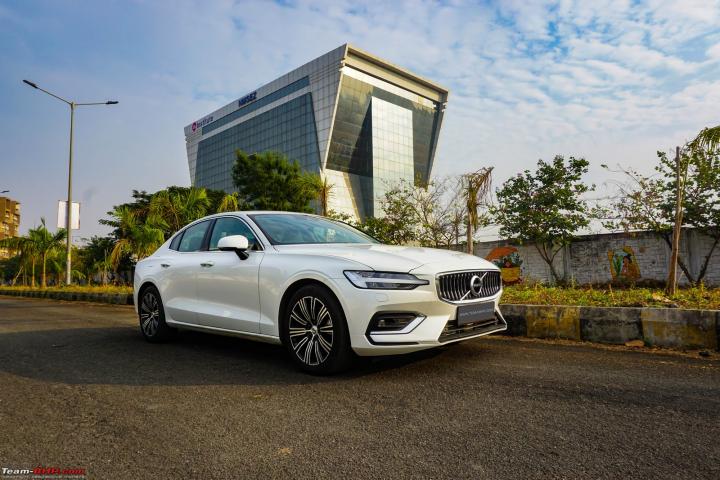





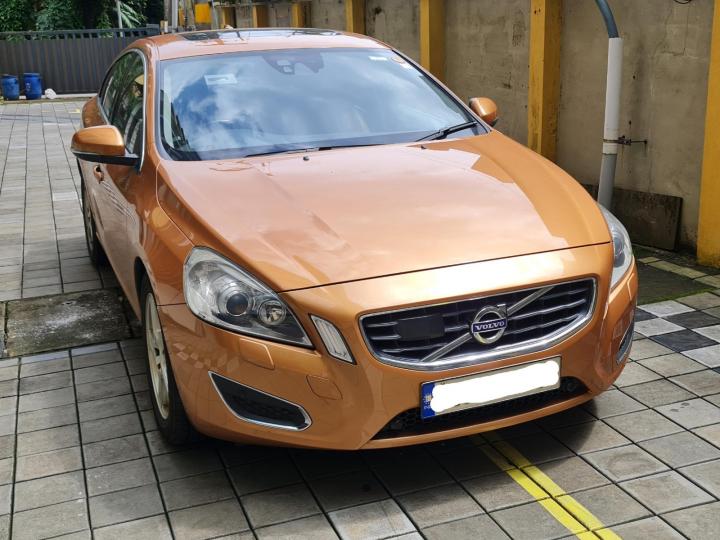




.jpg)

.jpg)


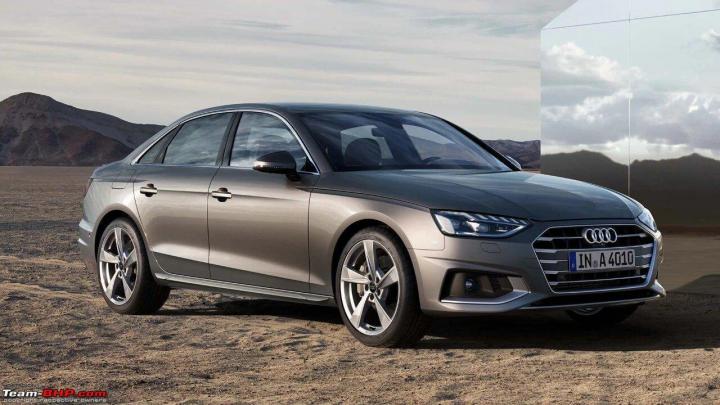


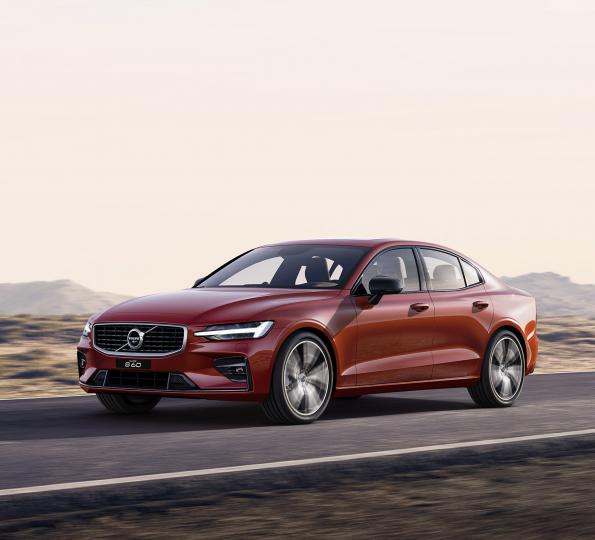
.jpg)
.jpg)

.jpg)
.jpg)
